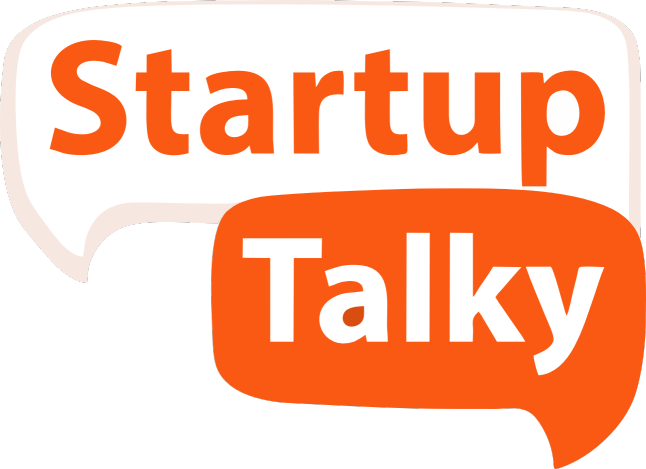How Fintech Startups Can Utilise Content Marketing for Growth
✍️ Opinions
This article has been contributed by Ankita Barthwal, Content Manager, Freo.
I still remember the day our team proudly published a blog post called "Understanding UPI Transaction Fees." We thought we'd given the world a literary masterpiece.
Spoiler alert: We hadn't.
The post read like an income tax manual and got fewer clicks than the Loveyapa cringe-fest reels. My boss printed it out just to dramatically fall asleep on it during our next team meeting. Point taken.
Below is a blueprint for turning your fintech content from zero to hero—hard-earned lessons from someone who's deleted more drafts than I care to admit.
1. Start with the Human Problem (Not Your Product)
People don't lie awake at night dreaming about your interest rates. They do worry about paying their bills on time or figuring out how to invest without feeling like they need a PhD in economics.
Why It Matters: When you address real financial pains—like saving for a dream vacation, building credit, or surviving the last week of the month when you're eating Maggi for dinner again—readers actually see themselves in your content.
Fun Example: Zerodha nailed this when they launched "Varsity." Instead of dry tutorials on stock trading, they created easy-to-digest modules answering the question on every newbie investor's mind:
"How can I buy shares without losing my shirt?"
The result?
A stampede of users who felt heard instead of lectured. I was one of them—after three failed attempts to understand P/E ratios elsewhere, their explanation finally made it click for me while I was sitting in a Café Coffee Day, probably spending money I should've been investing.
Pro Tip: Kick off articles or videos with a mini story—like "Meet Kavita, who realized her 'shopping spree' credit card balance was more horrifying than that Rajkummar Rao movie where he's trapped in a high-rise." It's a simple hook that mirrors real life.
2. Blog Like You're Telling a Friend a Crazy Story
A blog in fintech is often code for "Please let me bury you in facts while I demonstrate my MBA vocabulary."
But guess what?
After three years of watching our readers bounce faster than my nephew on his first cup of chai, I've learned they want stories they can actually relate to—maybe even ones that make them snort-laugh (which happened exactly once when I accidentally included a typo about 'pubic' instead of 'public' offerings...my editor still hasn't let me live that down).
The Magic of Storytelling: Turn jargony topics like "loan amortization" into something your 10-year-old cousin could grasp. Tuck an interesting tale in there—maybe how you once misunderstood APR and ended up with a bill that made you almost faint in a Domino's pizza queue while your date pretended not to know you.
Who Did It Right?We at Wealthsimple became a hit by going super conversational. They don't say "build a diversified portfolio." They say stuff like "Stop letting your money nap in your bank account while inflation beats it up." It's punchy, it's personal, and it makes you think, "Wait, I need to do something about this."
Pro Tip: If you catch yourself using words like "synergy," "leverage," or "ecosystem," ask: "Would I actually talk like this at a dhaba with a friend?" If not, delete and rephrase. I have a physical buzzer on my desk for this purpose. It's gotten more use than my office coffee machine.
3. Make Social Media About Real Conversations, Not Just Ads
Ever had a friend who only talks about themselves? Annoying, right? The kind who turns every conversation back to their breakup from 2018? Now imagine social media channels that do nothing but shout product features. Nobody's going to engage.
Conversation Starter: Ask open-ended questions. "What's the strangest money advice your parents ever gave you?" (Mine was "Always hide ₹2000 in your shoe"—useless in the UPI era and incredibly uncomfortable.) fosters more discussion than "Check out our new loan product!" People love sharing stories—especially weird money quirks.
A Look at CRED: Their mind-bending ad with Rahul Dravid going ballistic in traffic? That took an incredibly mundane task—paying credit card bills—and made it the talk of social media. I still can't see a traffic jam without thinking "Indiranagar ka gunda." The brand's vibe online stays consistent: they're not just a billing platform, they're a conversation starter about money.
Pro Tip: Use polls, memes, or mini-case studies in bite-sized posts. Keep it dynamic, not stuffy. My most successful post ever was asking people whether they'd rather have ₹10 lakhs cash or zero debt. The comments section nearly crashed our page.

4. Case Studies That Prove You Walk the Talk
Claims like "We're the fastest payment gateway" are about as believable as me saying I can outrun Usain Bolt after two plates of chole bhature. Readers want evidence.
Recipe for a Great Case Study:
- Set the Scene
- "Meet Amina, a small-business owner drowning in delayed invoices while trying to pay her staff's Diwali bonuses.”
- Show Your Intervention
- "We introduced our invoice financing tool, which she initially thought was 'too good to be true'—her words, not mine."
- Reveal the Results
- "She got paid in 3 days instead of 30. Cue happy dance, on-time bonuses, and one less stressed entrepreneur in Pune."
Stripe's Masterstroke: They consistently feature real-life businesses—like e-commerce startups or nonprofits—that scaled faster using Stripe. The focus is on their success story, not "Stripe is so awesome." It's a subtle but powerful difference.
Pro Tip: Keep it short, personal, and data-driven. Avoid turning your case studies into shameless bragfests. Show the numbers, share the heartfelt quotes, and leave the rest implied. And for god's sake, use real photos, not those horrible stock images of people in suits pointing at invisible charts.
5. Educational Content That Makes People Feel Smarter
The best fintech brands aren't just slinging loans and payment solutions; they're educating people in a way that schools somehow never did. My economics teacher would be shocked to know I now voluntarily read about yield curves.
Tactics:
- Interactive Quizzes
- "Which type of saver are you—Under-the-Mattress or High-Roller?" (I scored "Panic Investor" on our own quiz, which wasn't even a category. We had to add it just for me.)
- Short, Shareable Guides
- "5 Must-Know Budget Hacks for Your 20s That Don't Involve Giving Up Street Food."
- Simple Explainer Videos
- Break down big topics—like cryptos or mutual funds—into 90-second animations.
- Bonus points if you can explain UPI without using the phrase "seamless integration" even once.
Groww's Explainers: Groww turned the average person's confusion about mutual funds into easy-to-digest articles and short videos.
Their content soared in popularity because it felt like a friend guiding you, rather than a teacher grading you. I still remember their explanation of SIPs clicked for me while I was stuck in Bangalore traffic—made those 40 minutes almost worth it.
Metrics to Watch
- Time on Page: Are people actually reading your entire blog post, or bailing after the intro? (Our UPI security piece had an average read time of 18 seconds. The entire security team still gives me the side-eye.)
- Click-Through Rates: Do your Instagram or LinkedIn posts lead people to dig deeper?
- Conversions: Ultimately, are folks signing up, downloading your app, or asking for a demo after reading your stuff?
- Fail Fast, Fix Fast: If a piece of content bombs, dig into why. Was the topic uninteresting? Was it too wordy? Did the headline need more sparkle? Learn, pivot, and try again. My personal worst was a series on "Banking Transformation" that was so boring even I couldn't proofread it without coffee.
Pro Tip: Tools like Google Analytics or social media insights can do wonders, but the best data might come from actual user feedback. Ask them, "What content would you love to see next?" They'll tell you straight up. We once scrapped an entire content calendar after a particularly brutal feedback session. It was the best decision ever.
Final Thoughts: Talk to Real People, Not to a Faceless Crowd
- Money is a deeply personal topic—people get anxious, excited, or downright confused by it. So, if you're going to create content, make it resonate on a human level. That's what turns random browsers into loyal users.
- Be a storyteller: Even when discussing terms like APR or KYC, find the human angle. Nobody cares about KYC until you explain how it once saved your cousin from identity theft.
- Focus on the benefits, not just the features: Show how your fintech solution solves the "Where'd my money go?" panic that hits at 3 AM.
- Keep it real: Sound like a human, not a finance textbook or, worse, a LinkedIn influencer overusing the word "hustle."
- Experiment relentlessly: Try new formats and topics. Let your audience's feedback guide you, even when it hurts your feelings (still nursing wounds from the "this blog is so boring" comment).
Because at the end of the day, if your fintech content can make someone grin, sigh in relief, or take immediate action to improve their finances—you've already won half the battle.
P.S. If your content is so technical that it bores you while writing it, trust me, your audience won't make it past the first paragraph.
Keep it lively, keep it honest, and watch the magic happen.
And if all else fails, add a picture of a dog with a credit card. Works every time.
Don't ask me how I know this.

Must have tools for startups - Recommended by StartupTalky
- Convert Visitors into Leads- SeizeLead
- Website Builder SquareSpace
- Manage your business Smoothly Google Business Suite






